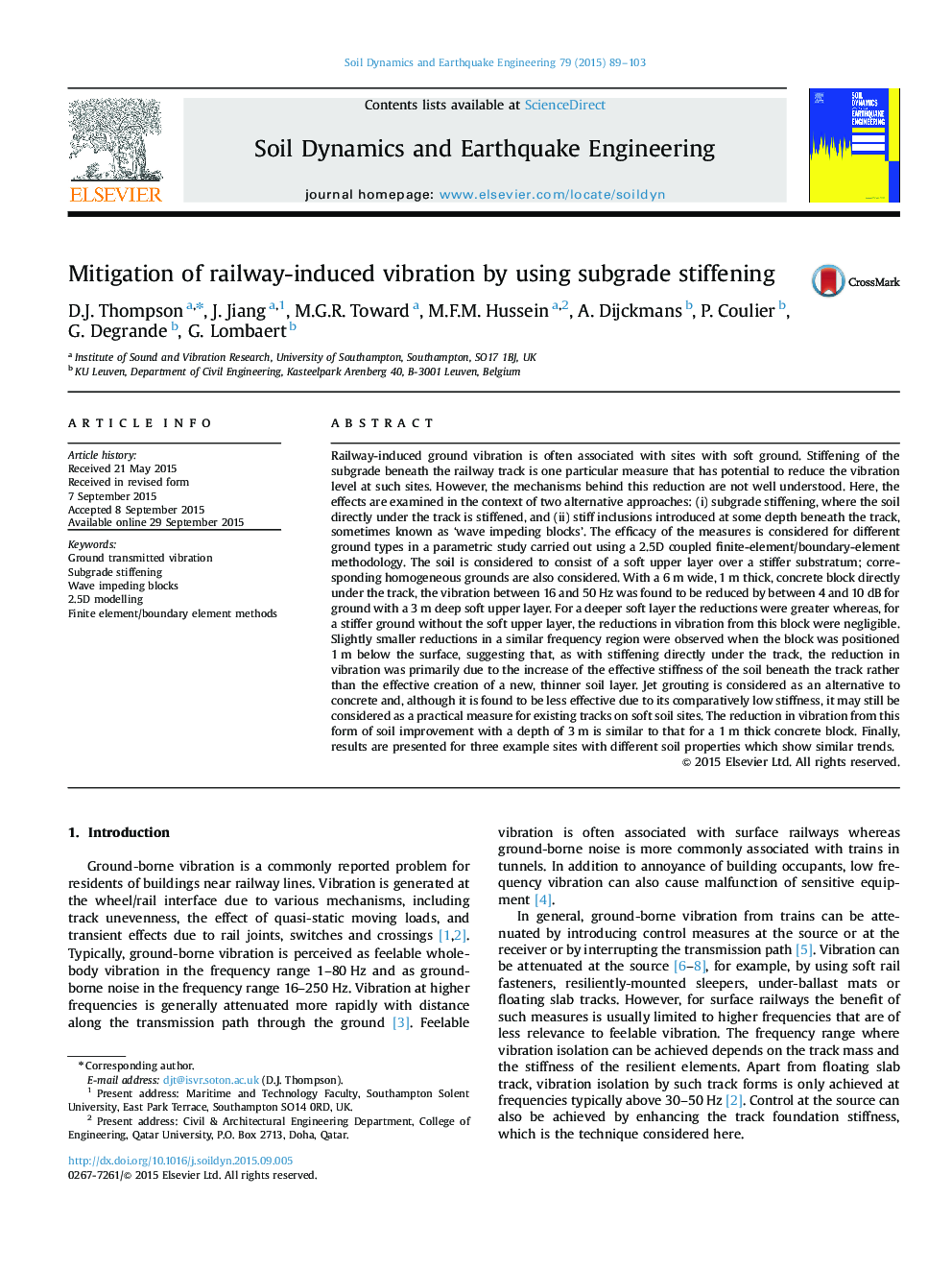| کد مقاله | کد نشریه | سال انتشار | مقاله انگلیسی | نسخه تمام متن |
|---|---|---|---|---|
| 303997 | 512768 | 2015 | 15 صفحه PDF | دانلود رایگان |
• Stiffening the soil beneath the track can reduce low frequency vibration.
• Soil stiffening is most effective on soil with a soft upper layer.
• 3 m deep jet grouting can give reductions similar to 1 m thick concrete.
• Stiffening the soil below the surface is less effective than at the surface.
• The effect of stiffening on wheel/rail interaction forces must be considered.
Railway-induced ground vibration is often associated with sites with soft ground. Stiffening of the subgrade beneath the railway track is one particular measure that has potential to reduce the vibration level at such sites. However, the mechanisms behind this reduction are not well understood. Here, the effects are examined in the context of two alternative approaches: (i) subgrade stiffening, where the soil directly under the track is stiffened, and (ii) stiff inclusions introduced at some depth beneath the track, sometimes known as ‘wave impeding blocks’. The efficacy of the measures is considered for different ground types in a parametric study carried out using a 2.5D coupled finite-element/boundary-element methodology. The soil is considered to consist of a soft upper layer over a stiffer substratum; corresponding homogeneous grounds are also considered. With a 6 m wide, 1 m thick, concrete block directly under the track, the vibration between 16 and 50 Hz was found to be reduced by between 4 and 10 dB for ground with a 3 m deep soft upper layer. For a deeper soft layer the reductions were greater whereas, for a stiffer ground without the soft upper layer, the reductions in vibration from this block were negligible. Slightly smaller reductions in a similar frequency region were observed when the block was positioned 1 m below the surface, suggesting that, as with stiffening directly under the track, the reduction in vibration was primarily due to the increase of the effective stiffness of the soil beneath the track rather than the effective creation of a new, thinner soil layer. Jet grouting is considered as an alternative to concrete and, although it is found to be less effective due to its comparatively low stiffness, it may still be considered as a practical measure for existing tracks on soft soil sites. The reduction in vibration from this form of soil improvement with a depth of 3 m is similar to that for a 1 m thick concrete block. Finally, results are presented for three example sites with different soil properties which show similar trends.
Journal: Soil Dynamics and Earthquake Engineering - Volume 79, Part A, December 2015, Pages 89–103
